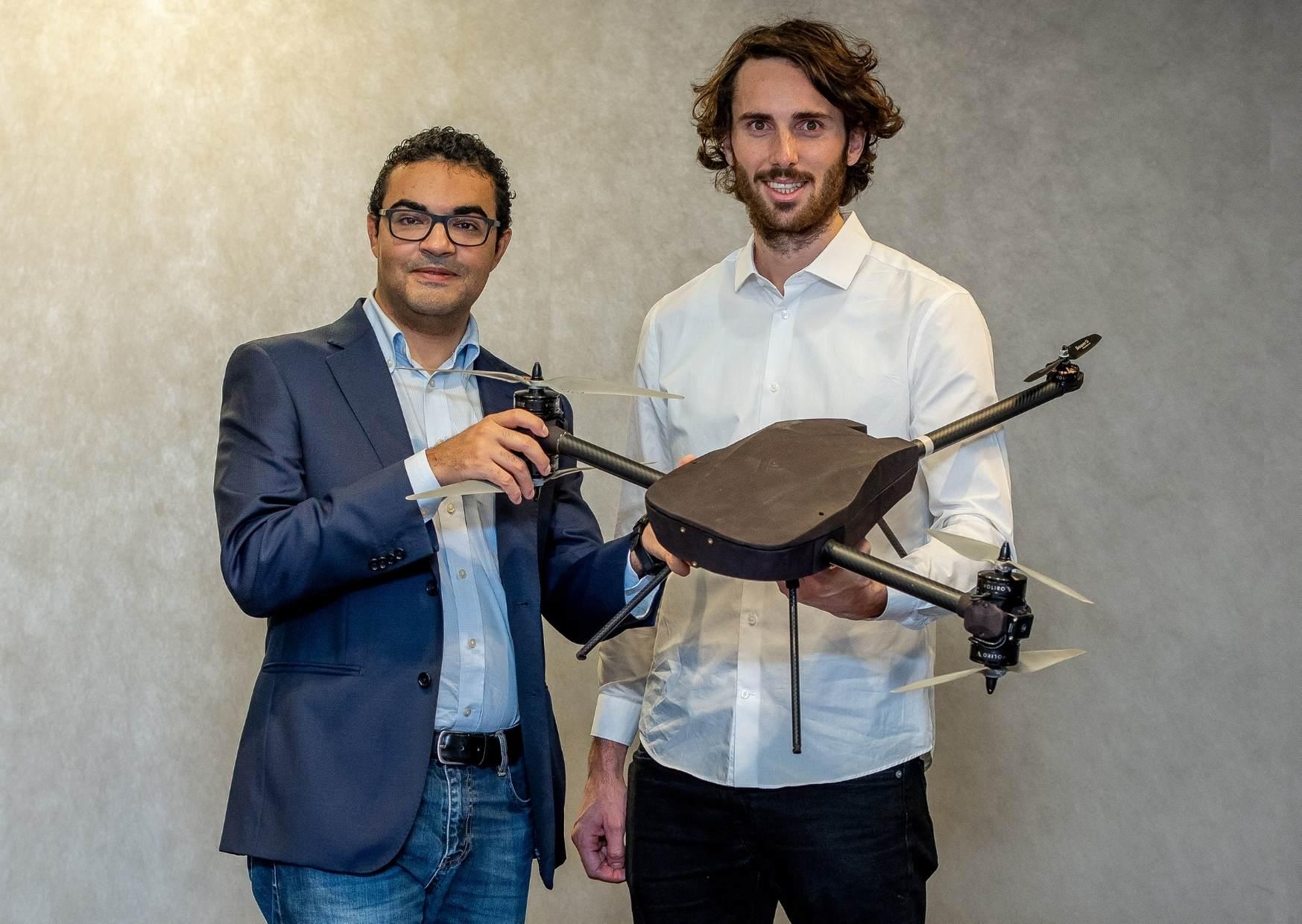
Businesses, big and small, have all been affected by COVID-19; for some, positively as their business models are either addressing mobility challenges brought by the pandemic, but for most, negatively as they were hit by both a drop in demand and other limitations on logistics and operations. Some even had to close permanently due to prolonged lockdowns that left them unable to sustain overhead costs.
Technology startups also have differing stories of how the global pandemic has affected them. Some prospered as they answer to specific needs brought by COVID-19, some remained stable with appropriate strategies and/or a good runway, but some folded due to lack of funding or loss of clients.
To give us an idea of how tech startups are weathering the global pandemic, we invited Mina Kamel, CEO and one of the co-founders of Switzerland-based Voliro Airborne Robotics to talk with us.
Voliro, an ETH Zurich Spin-off and Wyss Zurich project, is a startup that develops advanced flying robots to perform inspection and maintenance and other lightweight work on elevated structures. The Voliro technology began life in 2016-2017 as a student-focus project at the renowned ETH Zurich (Swiss Federal Institute of Technology) and was founded as a company in 2019. The founders are a group of five experts with different but complementary backgrounds: autonomous navigation, 3D mapping, control systems and mechanical engineering. Currently, Voliro is focused in Europe but the company is also in active discussions with customers in the United States and several countries in Asia.
Below are Mina’s insightful answers that will give a clear overview of how Voliro has dealt and is still dealing with the challenges caused by the pandemic.

What are the changes in your company that you can attribute largely to the pandemic?
Remote working is the biggest change we had to deal with as we had to strictly follow the rules, especially at the start of the lockdown. Most of the team were and still are working remotely. The early days of the pandemic were a bit difficult when everyone was panicking. Our access to the lab was blocked, so product developments and testing were put on hold. Some of us were able to bring home some hardware to continue some tasks that we could do outside the lab. But when the rules were relaxed a bit, part of the team could then go to the lab for testing and for other tasks when hardware access is needed. I have to admit remote working reduced interaction between the team like over coffee breaks, but we compensated for it by setting up remote coffee breaks, online team events and group chats for specific topics and general discussions.
The pandemic limited our ability to travel. We could not go overseas to demonstrate our technology. Live demonstrations to potential clients were either cancelled or postponed. To continue showcasing our technology from the base, we did remote demos via video conferencing. It was a nice alternative to get interest, but we were still unable to push through with real pilot projects.
Overall, the pandemic has affected the business side quite significantly. Nonetheless, the development side had recovered by mid-2020 with just a little delay. Finance-wise, we were able to plan our financing round with due consideration of the pandemic. So, our runway was extended which allowed us to continue as planned despite the delays.
It is worth noting though that there is a silver lining in the pandemic for Voliro. Businesses are realising that robotics will be much more needed in their operations. The use of autonomous systems such as robots will minimise the number of workers in the field, which is particularly relevant now when mobility is limited or even impossible in some areas.
If the pandemic did not happen, how would it have been for your company? Describe your pre-COVID plans and prospects.
Our original plan was to start deployment with customers late last year leading up to early this year. However, that was not possible due to some delays in development and travel restrictions due to COVID-19. So, our plans have been moved. Aside from us being unable to fly to our clients, our visitors who were scheduled to fly to Switzerland to inspect the product have been cancelled or postponed. They cited quarantine requirements, which would reach about a month in their respective countries and in Switzerland, as the primary reason for visit postponements.
So, it was quite difficult to follow our initial plans. I think if we had not been going through a pandemic, we would have been deploying our products to a couple of customers. Our drones would have been flying around providing assistance to companies. Our growth would have been better without the pandemic.
Has the pandemic slowed down your company’s growth plans? If so, how do you plan to return to your desired growth rate?
To catch up on our growth rate, we are currently accelerating to hand over the system to our partners in the regions where our potential clients are. Basically, what we do is we ship the unit to our partners and they will provide the demo to interested customers in certain regions. Having a local partner was already part of our plans before the pandemic, it was just implemented earlier and the scope of partnership has been expanded.
If we consider both the delays on the development and business sides, I can say we are about six months behind our original plans. And given that the pandemic has been around for almost a year now and the delay in our plans is just half of that period, I would say we are dealing with it quite well. Our team has adjusted quickly with the changes - we are able to stay productive despite working from home and having limited communications.
How do you see the next six months for the company? Next three years?
For this year, we will start real deployment with customers very soon. We are focusing our very first developments and deployments in Europe, then we will expand to Asia and the United States. Towards the end of the year, we want to have a certain number of deployments that validate our market value. We want to be in a strong position where we have served our customers with real inspections and can guarantee what we expect as revenues from these deployments.
One of the key performance metrics we want to achieve this year is a certain amount of revenues or guarantees that we can show to attract potential investors for the next financing round that we plan towards the end of the year or early next year.
For the next 3 years, financing will help us to do two things: first is to grow current deployment and increase our client base, and second, to develop the next generation of our drone that will have increased autonomous capabilities. The plan is to launch a second and third version of the product that has more capabilities to reduce the effort to operate the product and inspect complex structures.
What do you think tech startups and scaleups could do to weather the effects of the pandemic? What type of support would they need to struggle less or survive the pandemic?
It takes a lot of effort to bring the whole team together during a pandemic. With work from home arrangements, people feel isolated and lacking strong interaction with the rest of the team. So, companies need to make sure that people are talking to each other and getting support from the rest of the team. This is one strong challenge that companies are trying to address by having some remote events, virtual coffee breaks, etc.
Second, companies need to try new ways to attract customers in times of limited mobility. Selling hardware was already very challenging before the pandemic, and it has only become more difficult. One way is either to ship samples to customers to get their hands on the products and test them, or to conduct remote demos.
Another option is to make use of online platforms like TechnologyCatalogue.com to expand the reach of the company. For instance, customers who cannot attend exhibitions can go online for new technologies or engage with suppliers. An online platform like TechnologyCatalogue.com has these technologies in one place 24/7, which is really valuable to tech companies as well as to customers. With exhibitions available only for a limited amount of time, you can easily get lost in between and spend a lot of time. Here, you have everything in a fixed place.
Lastly, as a support to tech startups in these challenging times, there is a need for customers to also adapt to the current situation and accept remote demonstration and validation of products. Customers have to be open-minded to see the product remotely and ask questions or interact with suppliers remotely. They should not be scared to commit to a very fast version of a product to see it closely.
TechnologyCatalogue.com’s Faces of the Energy Transition blog series aims to shed light on key issues surrounding the global transition to clean energy. We invite thought leaders, industry players and members of the academe to share their insights on topics that are related to the Energy Transition.
If you have suggestions on topics and/or resource persons, feel free to reach out via email at community@technologycatalogue.com.
